In indoor or outdoor gardens, plants with purple and green leaves create a visually stunning symphony of hues. Some varieties, such as Aglaonema, Boat Lily, and Caladium, have beautiful deep purple and vivid green color combinations. These plants are perfect for both novice and expert gardeners because they are not only visually stunning but also simple to grow.
Their distinctive foliage elevates the visual appeal of any setting by bringing a little bit of nature’s artistic talent and a pleasing harmony of colors. Continue reading the article to discover 35 Plants with Purple and Green Leaves below.
Different Types of Plants with Purple and Green Leaves
Purple Sword
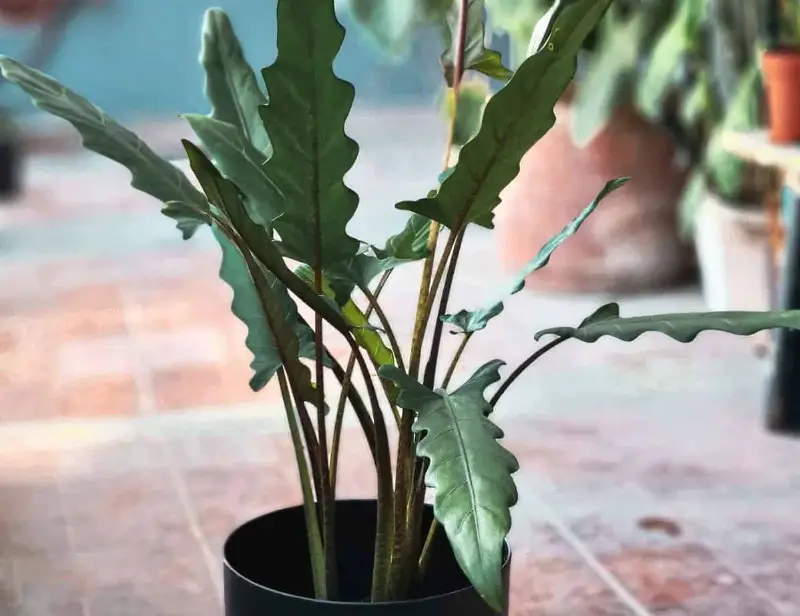
USDA Zones 9–12 are ideal for growing Alocasia lauterbachiana, sometimes known as the Purple Sword. This plant is a stunning addition to any environment, with its long, slender leaves in a rich spectrum of deep purple and green. It thrives in bright, indirect light and is surprisingly easy to care for.
Purple Passion
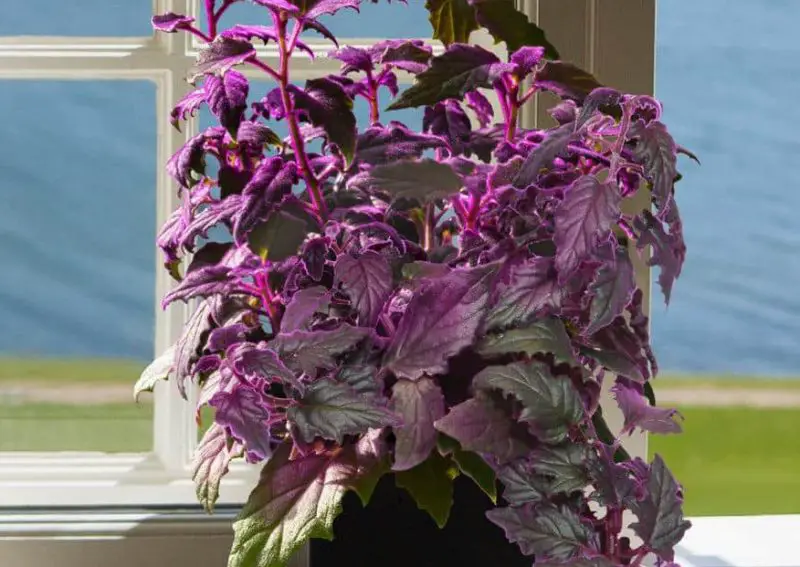
USDA Zones 6–12 offer a breathtakingly stunning option for indoor gardens with Purple Passion, formally known as Gynura aurantiaca. It offers a striking pop of color with its rich purple outline around the leaves and vivid green interiors. Purple Passion is a great option for people looking for an indoor plant collection that is easy to maintain and has an eye-catching appearance. It thrives in bright, indirect light and soil that drains properly.
Purple Pearl Echeveria
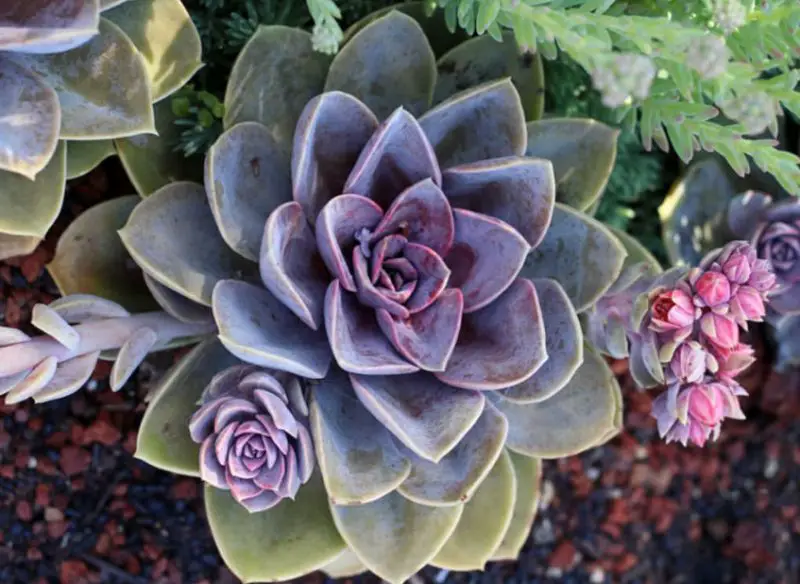
Echeveria ‘Purple Pearl,’ as it is known scientifically, is a Purple Pearl Echeveria that grows best in USDA Zones 9–12. This stunning succulent has delicate, purple-green leaves clustered in a distinctive rosette-like foliage pattern. It is a purple and green plant that is easy to maintain and thrives in bright, indirect light. For those who enjoy succulents and indoor plants equally, the Purple Pearl Echeveria is a remarkable addition that combines visual appeal with ease of maintenance.
Rex Begonia

USDA Zones 10–12 are ideal for growing Begonia rex-cultorum, also referred to as the Rex Begonia in science. This plant, which is well known for its beauty, has strikingly patterned leaves in colors of green and purple. For those looking to add a splash of color to your indoor garden, the Rex Begonia is a great option because of its beautiful foliage.
Rubber Plant
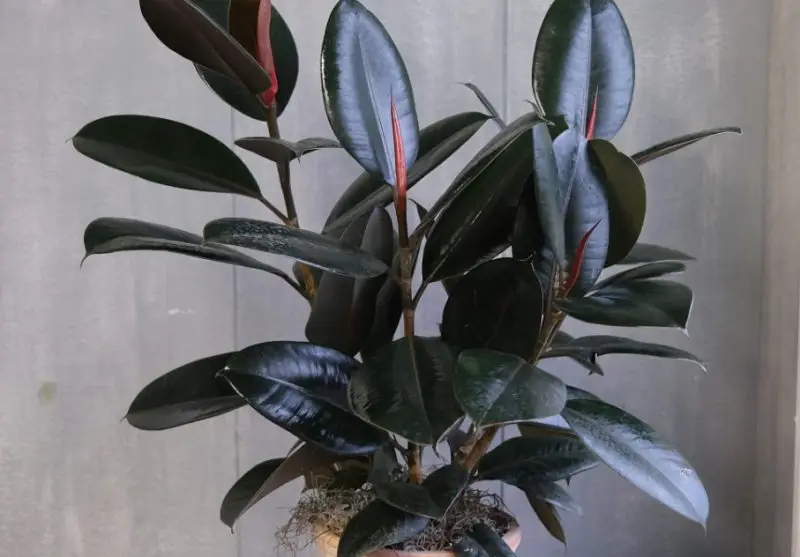
Ficus elastica, the official name for the rubber plant, is a traditional indoor plant that grows well in USDA Zones 10 through 11. Its leaves have a deep green color with a faint tint of purple, adding to its lovely appeal. This plant, which thrives in bright, indirect light and is well-known for being low maintenance.
Ruby’s Necklace
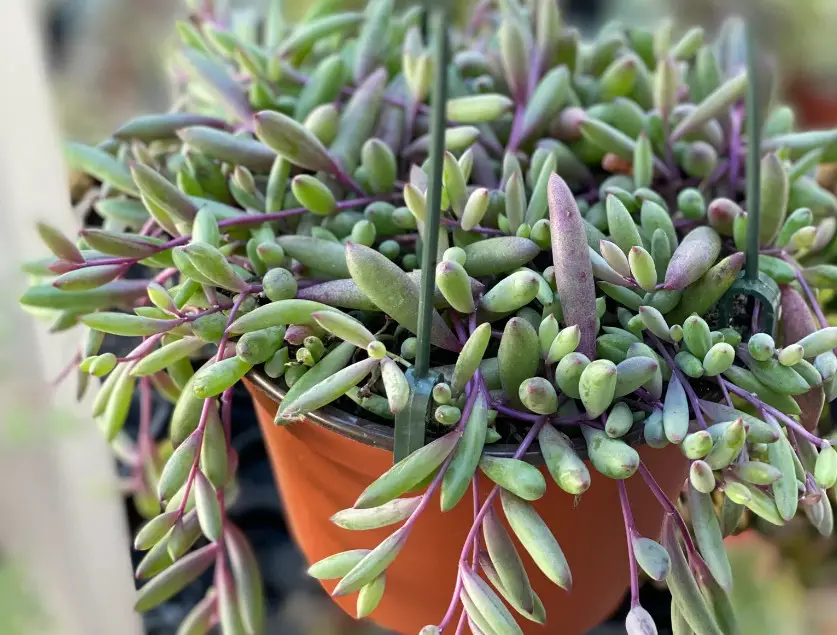
Ruby’s Necklace, officially known as Othonna capensis ‘Ruby Necklace,’ grows best in USDA Zones 9–11. With its beautiful, ruby-colored blossoms and deep purple leaves, this plant is quite captivating. Ruby’s Necklace subtly accentuates any environment, making it a great option for individuals looking for both beauty and minimal upkeep.
Silver Squill
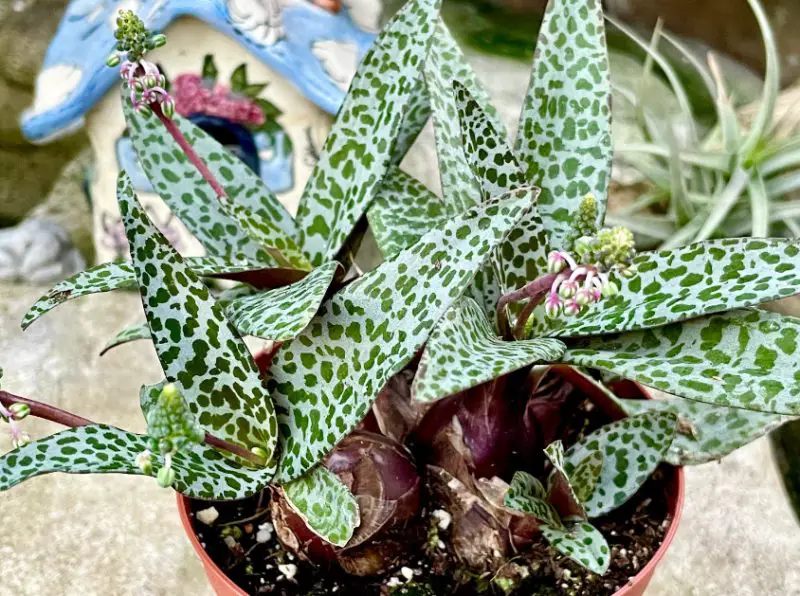
USDA Zones 10–11 are ideal for the Silver Squill, or Ledebouria socialis as it is known scientifically. The stunning purple undersides of the deep green leaves of this unusual and eye-catching plant are a remarkable feature. The Silver Squill is well-known for being low maintenance and prefers well-draining soil and bright, indirect light.
Tiger Stripes Kalanchoe
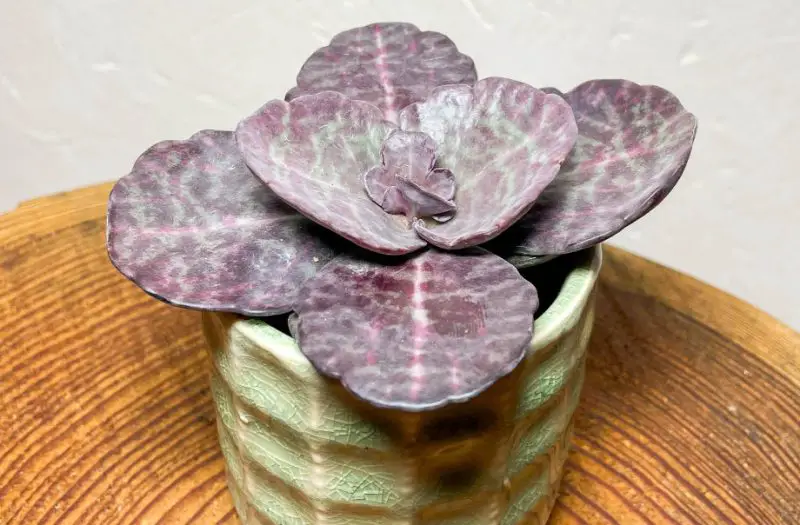
The Tiger Stripes Kalanchoe, scientifically known as Kalanchoe humilis, thrives in USDA Zones 10-12. This stunning plant showcases deep purple leaves adorned with distinctive, tiger-stripe-like markings in shades of green. Excelling in bright, indirect light and well-draining soil, the Tiger Stripes Kalanchoe proves to be an outstanding choice for indoor gardening. With its unique markings and easy care requirements, it adds a touch of natural elegance and intrigue to any indoor space.
Velvet Leaf Philodendron
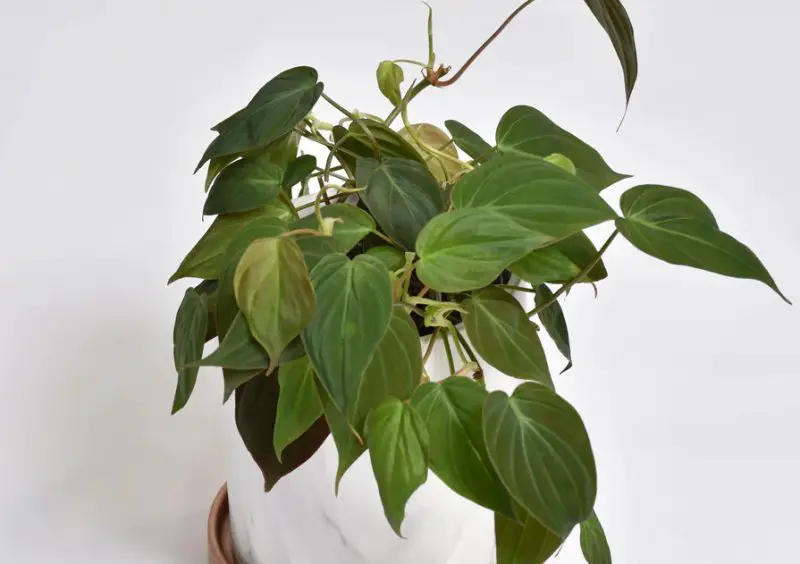
The Velvet Leaf Philodendron, scientifically named Philodendron micans, thrives in USDA Zones 9-12. This beautiful and unique plant boasts soft, velvety leaves in a rich, deep shade of green. Ideal for indoor gardening, it flourishes best in bright spots, contributing to its distinctive beauty.
Aglaonema
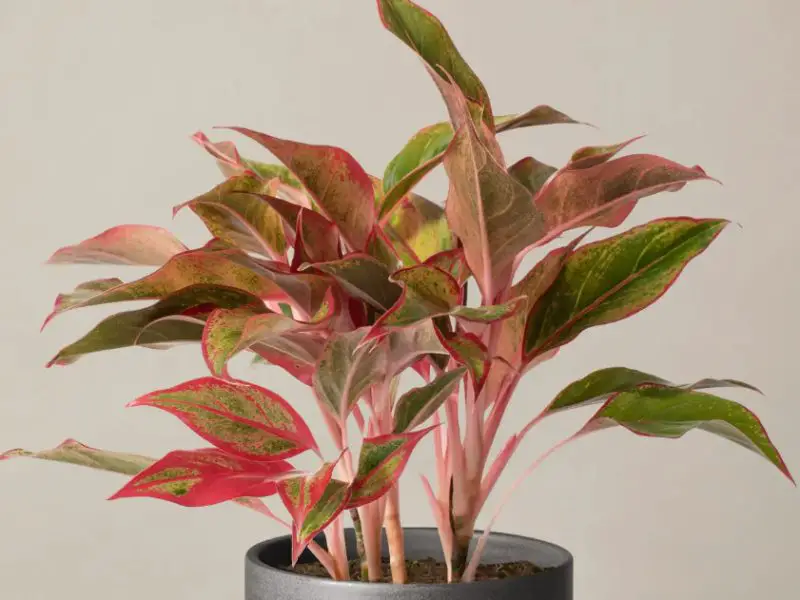
Aglaonema, scientifically known as Aglaonema rotundum, thrives in USDA Zones 10-11. Adorned with vibrant purple and green hues, these plants exhibit splashes of purple or pink. Tailored for beginners, they flourish in low to medium light conditions, making them a perfect choice for both homes and offices. With their stunning colors and easy maintenance, Aglaonema adds a touch of nature’s beauty to any space.
Boat Lily
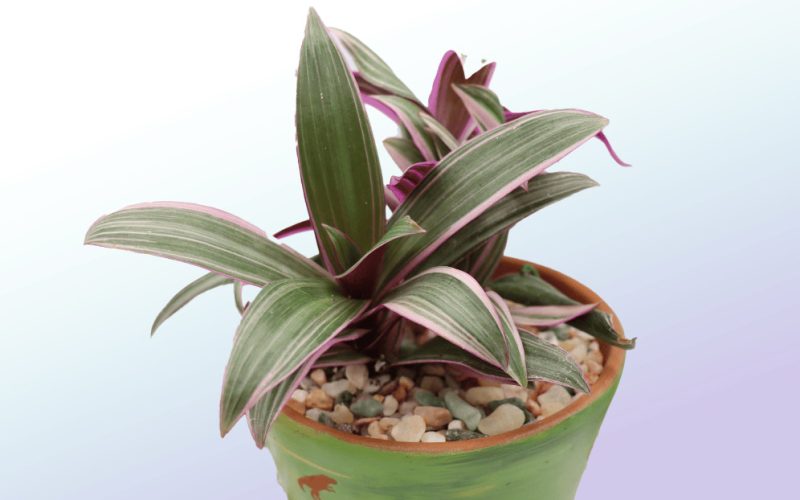
Boat lilies grow best in USDA Zones 9–12. Their scientific name is Tradescantia spathacea. Known by the fascinating nickname “Moses-in-a-basket,” this plant is quite simple to grow. Its cascading habit and green leaves with their eye-catching purple undersides make it a perfect choice for hanging baskets. The Boat Lily subtly enhances its surroundings by bringing a dash of elegance and organic charm to any area.
Caladium
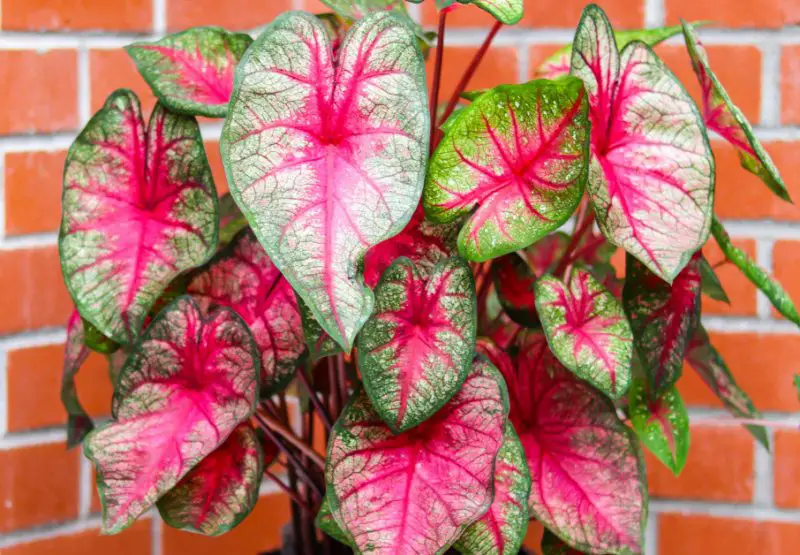
Caladium, known by its botanical name Caladium, is found in USDA Zones 9 through 11. Among the well Purple and Green Plants, this species is well-known for its amazing foliage. It grows well in warm, humid regions, making cultivation simple and adding vivid visual appeal.
Rose Painted Calathea

Calathea Roseopicta ‘Dottie,’ the scientific name for the Rose Painted Calathea, grows well in zones 10 through 12. Its leaves create a captivating sight with their detailed patterns that resemble pink, purple, and green brushstrokes. The plant’s distinctive markings give its leaf a refined and artistic touch, making it a compelling addition to indoor or outdoor landscapes.
Sand Rose
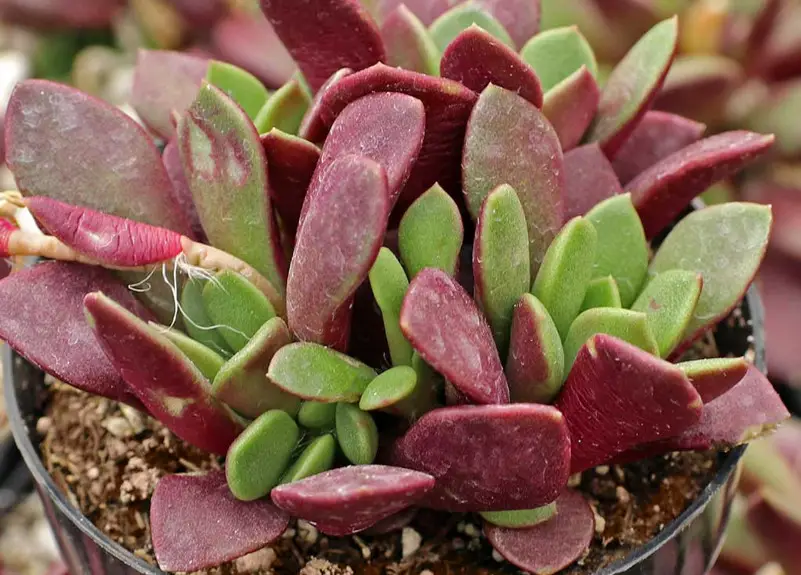
The Sand Rose, scientifically termed Anacampseros rufescens, flourishes in USDA Zones 11-12. This slow-growing succulent forms clumping mats, with leaves displaying a dual-tone palette. Dark green tops contrast with deep purple undersides, creating an intriguing visual dynamic. When content and experiencing stress, the green transforms into a reddish shade, adding a fascinating dimension to the Sand Rose’s appearance.
Purple Basil
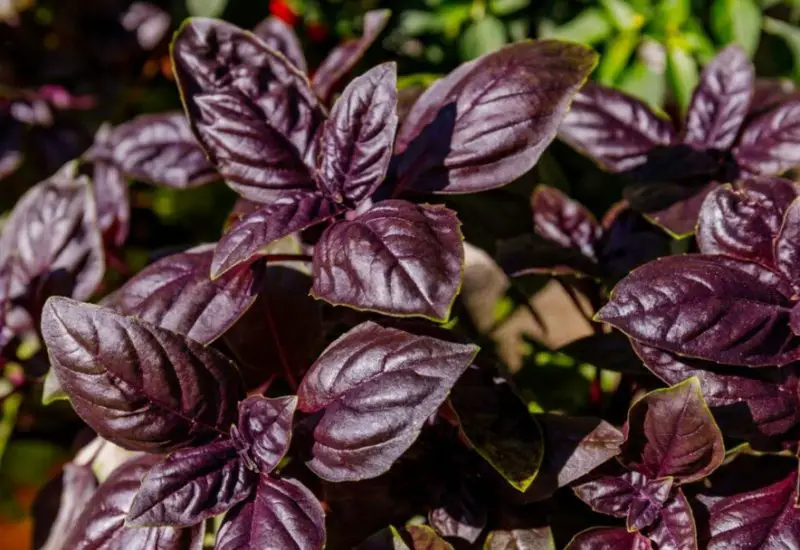
Purple Basil, scientifically labeled Ocimum basilicum L., thrives in USDA Zones 9-11. The leaves of Purple Basil stand out with their rich, deep purple color, introducing a vibrant and eye-catching element to gardens or culinary endeavors.
Echeveria ‘Perle Von Nürnberg
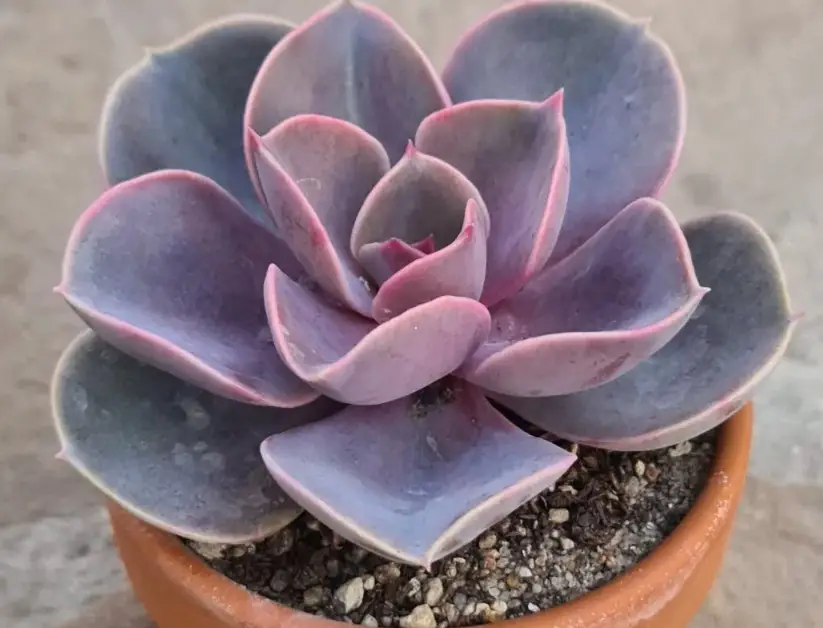
Echeveria ‘Perle Von Nürnberg,’ thriving in USDA Zones 9-12, is a stunning gray succulent with evergreen foliage. When bathed in full sun, its leaves transition into shades of pink and purple. During the summer, the plant blooms with lovely pink flowers, featuring yellow centers, enhancing its beauty.
Never-Never Plant
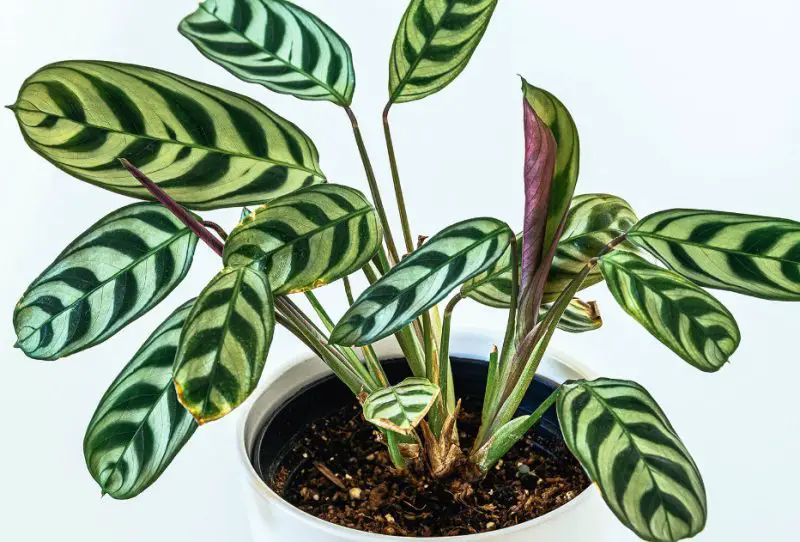
The Never-Never Plant, scientifically named Stromanthe thalia ‘Triostar,’ thrives in USDA Zones 10-12. Originating from Brazil, this lush plant features graceful pointed green leaves with splashes of pale green, cream, and pink on the upper surface. The underside reveals deep pink, maroon, or magenta hues, creating a visually stunning contrast.
Coleus
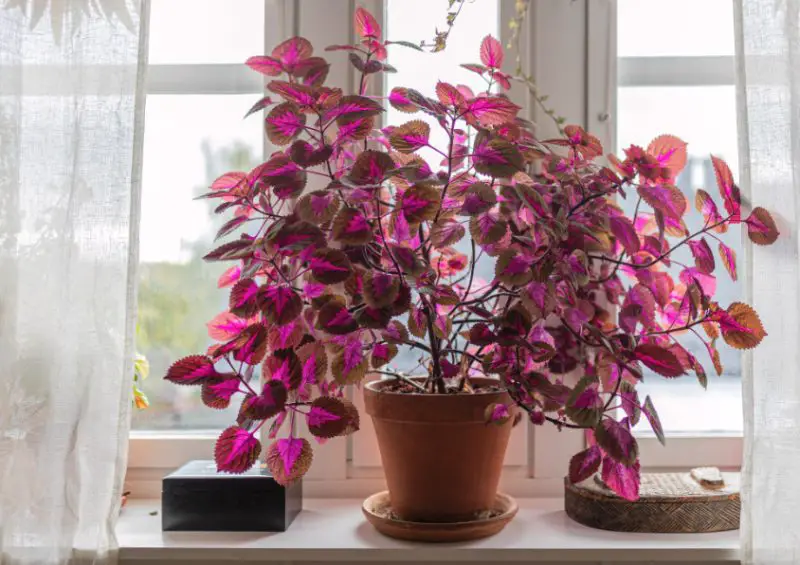
USDA Zones 10–13 are home to coleus, or Plectranthus scutellarioides as it is known scientifically. Offering a vibrant spectrum of hues, the appealing mix of green and purple shines out. Vibrant and aesthetically pleasing landscapes are often adorned with striking varieties like black lace, black magic, fishnet stockings, flame thrower chili pepper, and black lace, which fascinate fans.
Job’s Beard
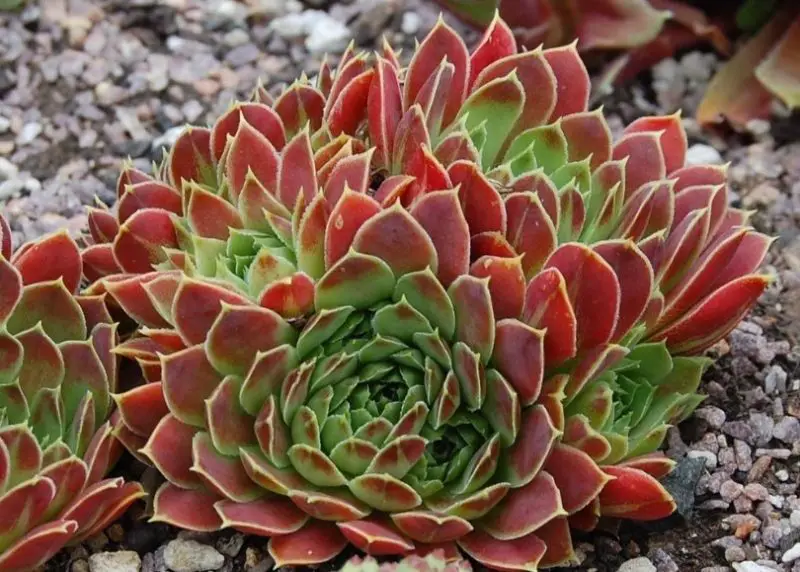
Job’s Beard, or Sempervivum heuffelii, graces gardens in USDA Zones 8–11. Also known as Astilbe, this beautiful flowering plant contributes a delightful blend of purple and green hues to your garden. Characterized by fern-like green or bronze leaves, it boasts tall spikes adorned with feathery flowers ranging from white to pink or purple. Job’s Beard stands as a magnificent addition, introducing both color and elegance to your outdoor space.
Inch Plant
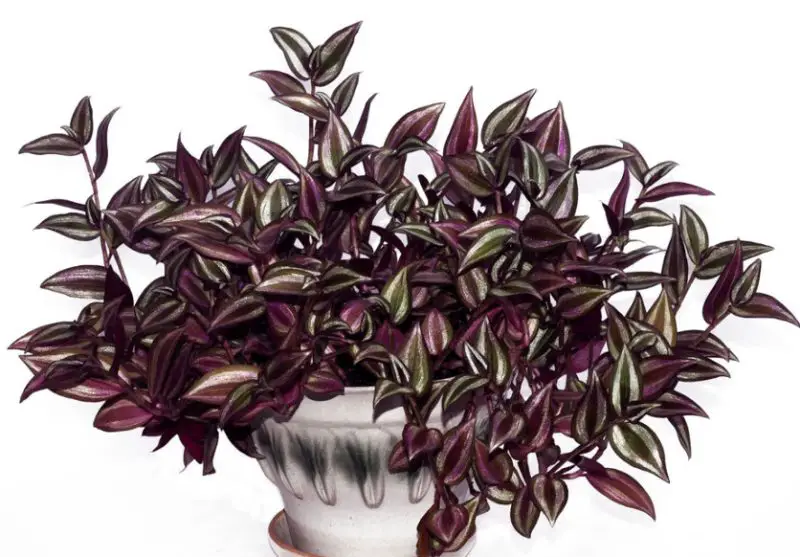
USDA Zones 9–12 are ideal for the Inch Plant, or Tradescantia zebrina as it is known scientifically. This plant, which is highly regarded for its alluring purple and green leaves with silvery stripes, brings some life to any area. It grows well in outdoor settings as ground cover or when strung in a hanging basket because of its low maintenance requirements. The Inch Plant gracefully enhances the visual appeal of its surroundings, serving as a monument to the beauty of nature.
Iron-Cross Begonia
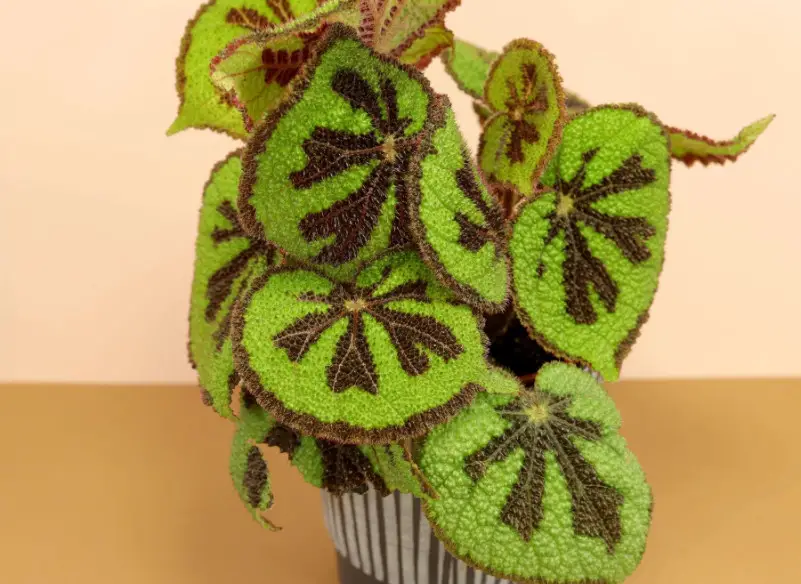
The Iron-Cross Begonia, scientifically known as Begonia masoniana, thrives in USDA Zones 11-12. Featuring large, asymmetrical leaves with green tops and striking purple undersides embellished with silver veins, it’s a visual delight. In summer, delicate pink or white flowers further enhance its appeal. Successful cultivation of the Iron-Cross Begonia requires well-draining soil, ensuring optimal growth and showcasing the plant’s distinctive and characteristics.
Iron Cross Houseplant

The Iron Cross Houseplant, scientifically identified as Oxalis tetraphylla, thrives in USDA Zones 6-10. Featuring triangular-shaped leaves with vibrant green tops and purple undersides, this plant is adorned with small pink or white flowers that bloom during the summer. As a stunning indoor addition, the Iron Cross Houseplant brings a touch of purple and green elegance to your home, effortlessly enhancing the aesthetics of your indoor spaces.
Ornamental Cabbage
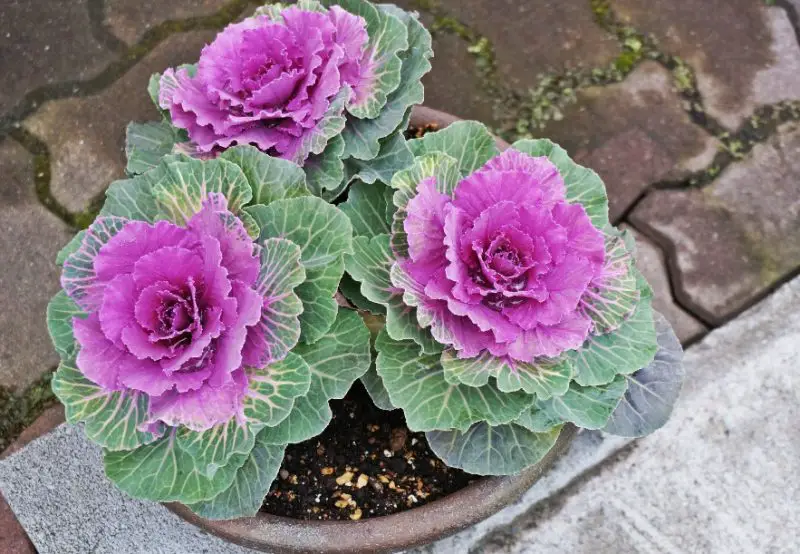
Ornamental Cabbage, scientifically recognized as Brassica oleracea, spans USDA Zones 2-11. This cool-season plant, commonly known as kale, is cultivated for its vibrant and colorful leaves. Displaying a spectrum of hues, including green, white, pink, and purple, Ornamental Cabbage becomes a picturesque addition, injecting a burst of color into your garden or patio.
Prayer Plant
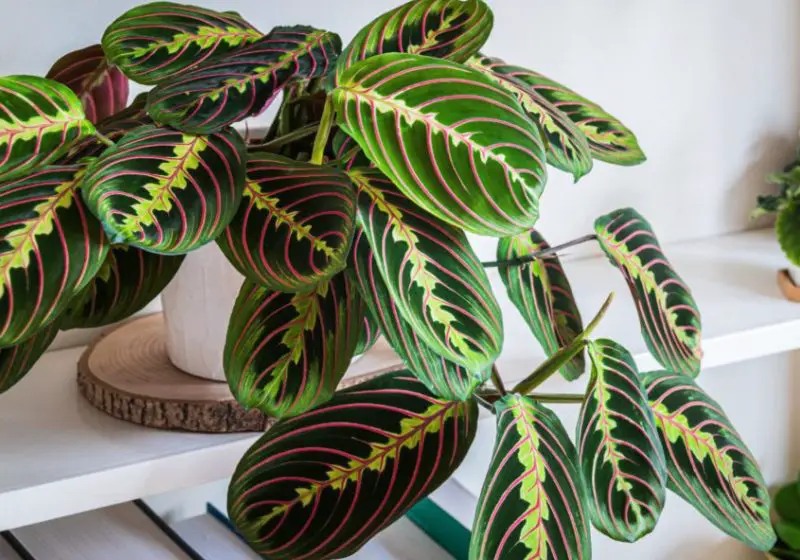
Known by its scientific name, Maranta leuconeura, the Prayer Plant is a beloved foliage plant that grows well in USDA Zones 11–12. This well-liked purple and green plant adds a flash of color and texture to interior areas with its deep green leaves that have seductive purple undersides. Renowned for its versatility and aesthetic appeal, the Prayer Plant is a beloved option that adds visual depth to any indoor setting.
Persian Shield

The Persian Shield, botanically known as Strobilanthes dyerianus, is a stunning plant that looks amazing with its iridescent purple leaves. It grows in USDA Zones 8 through 11. Its remarkable visual appeal is matched by its surprisingly low maintenance requirements, making it perfect for adding drama to garden beds or using as a striking statement plant indoors. Growing well in both indoor and outdoor environments, the Persian Shield blends elegance and simplicity with ease. It thrives in bright, indirect light and regularly moist soil.
Waffle Plant

USDA Zones 10-11. This is the best region for the Waffle Plant, technically known as Hemigraphis alternata. Waffle plants are a great option if you’re looking for something unusual and lovely. Any visitor to your home will be captivated by its foliage, which has vibrant tones of green and purple.
Purple Shamrock
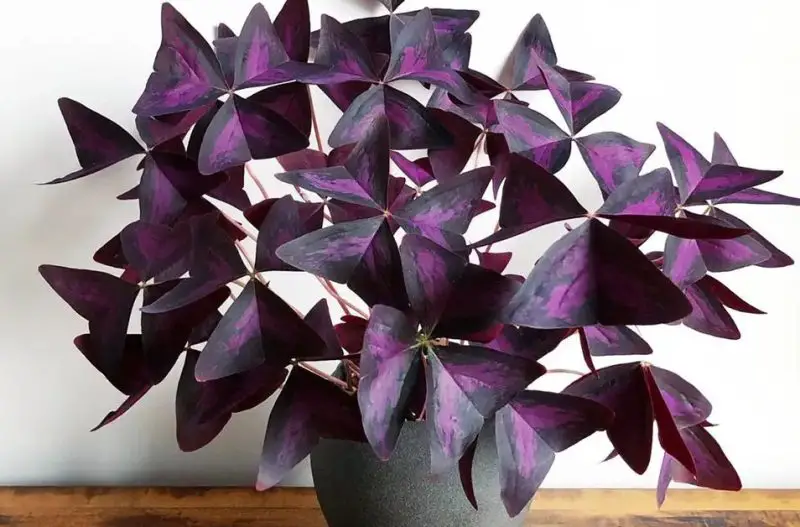
The Purple Shamrock, scientifically termed Oxalis triangularis, adapts well to USDA Zones 8-11. Often referred to as a false shamrock, this unique plant features purple and green leaves, with a remarkable shade resembling deep purple or almost black. The distinctive triangular-shaped leaves tend to grow in groups of three, contributing to their allure.
Wandering Jew
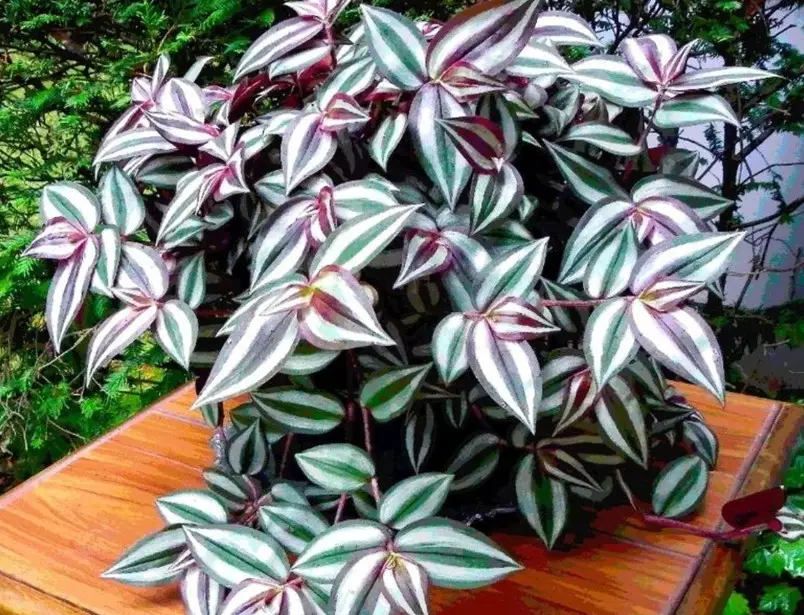
USDA Zones 9–11 are ideal for the growth of the Wandering Jew, or Tradescantia zebrina as it is scientifically known. Well-known for its vivid foliage, its leaves feature an eye-catching fusion of silver, purple, and green hues. The plant’s distinctive patterns, which are frequently embellished with stripes or speckles, add to its visual appeal.
People Who Read This Also Read:






